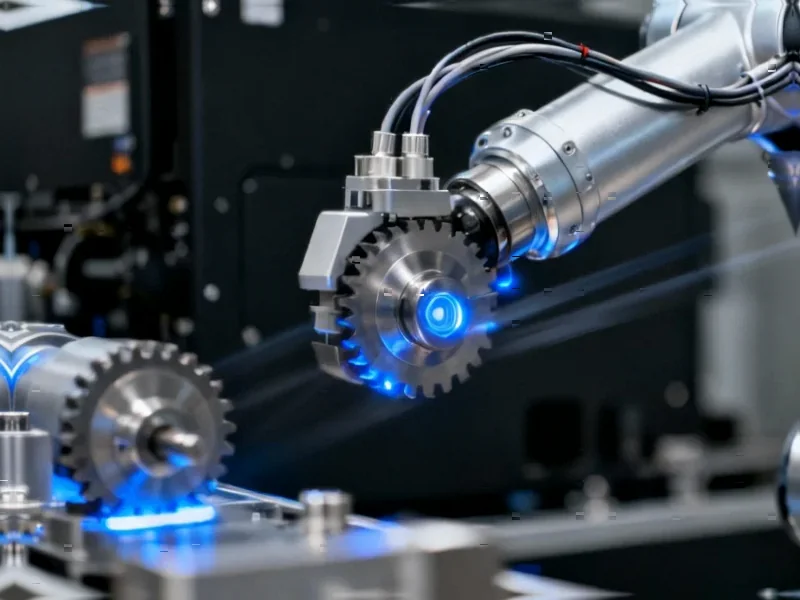Revolutionizing Protein-Peptide Interaction Prediction
In a significant breakthrough for computational biology and drug discovery, researchers have developed GraphPep, an innovative graph neural network framework that addresses one of the most persistent challenges in peptide-based therapeutic development. Unlike traditional approaches that struggle with limited training data, this novel method fundamentally reimagines how protein-peptide interactions are modeled and scored.
Table of Contents
- Revolutionizing Protein-Peptide Interaction Prediction
- The Data Scarcity Problem in Peptide Drug Discovery
- How GraphPep’s Innovative Architecture Overcomes Limitations
- Enhanced Learning Through Advanced Protein Language Models
- Rigorous Validation Against State-of-the-Art Methods
- Implications for Future Drug Discovery
The Data Scarcity Problem in Peptide Drug Discovery
Peptide therapeutics represent a rapidly growing segment of pharmaceutical development, offering potential treatments for conditions ranging from metabolic disorders to cancer. However, the computational prediction of how these peptides interact with target proteins has been hampered by a critical limitation: the Protein Data Bank contains relatively few protein-peptide structures compared to other biomolecular complexes.
“The scarcity of high-quality protein-peptide structural data has been a major bottleneck,” explains the research team behind GraphPep. “Traditional machine learning approaches require extensive training data, which simply doesn’t exist in sufficient quantities for protein-peptide interactions.”
How GraphPep’s Innovative Architecture Overcomes Limitations
GraphPep introduces a paradigm shift in how computational models approach protein-peptide scoring. Rather than modeling individual atoms or residues as graph nodes—the conventional approach in molecular machine learning—GraphPep represents actual protein-peptide interactions as nodes in its graph structure., according to recent innovations
This fundamental architectural innovation allows the model to:
- Focus on interaction patterns rather than structural minutiae
- Learn transferable interaction principles that apply across different protein-peptide pairs
- Reduce data requirements by prioritizing the most biologically relevant features
Enhanced Learning Through Advanced Protein Language Models
The researchers further amplified GraphPep’s predictive power by integrating ESM-2, a state-of-the-art protein language model developed by Meta AI. This integration provides GraphPep with deep evolutionary and structural insights about protein sequences, enabling the model to make more informed predictions about how novel peptides might interact with target proteins.
“Combining interaction-focused graph learning with the evolutionary intelligence of protein language models creates a synergistic effect,” the team notes. “The model understands not just what interactions occur, but why they’re biologically plausible.”, as our earlier report
Rigorous Validation Against State-of-the-Art Methods
The research team subjected GraphPep to extensive testing using diverse decoy sets generated by multiple protein-peptide docking programs, including those produced by AlphaFold. In head-to-head comparisons against current leading methods, GraphPep demonstrated superior accuracy and robustness across various evaluation metrics.
Key performance advantages included:
- Improved ranking of native-like structures among decoy complexes
- Enhanced ability to distinguish correct binding modes from incorrect ones
- Consistent performance across different protein families and peptide types
Implications for Future Drug Discovery
GraphPep’s approach represents more than just incremental improvement in scoring functions—it offers a fundamentally new way to think about computational modeling of biomolecular interactions. By focusing on interactions rather than structures, the framework opens new possibilities for modeling other types of molecular complexes where structural data is limited.
The methodology could accelerate peptide drug discovery by enabling more reliable virtual screening of peptide candidates, reducing the time and cost associated with experimental validation. As the pharmaceutical industry increasingly looks to peptides as promising therapeutic modalities, tools like GraphPep may become essential components of the drug development pipeline.
The research demonstrates how innovative machine learning architectures, combined with biological insight, can overcome fundamental limitations in computational biology, potentially accelerating the development of new peptide-based treatments for various diseases.
Related Articles You May Find Interesting
- Philips Brilliance 27E3U7903: A Professional 5K Monitor That Challenges Apple’s
- China’s Strategic Tech Independence Drive Gains Momentum Amid Global Tensions
- Samsung Ramps 8th-Gen V-NAND Manufacturing as AI Storage Demand Reshapes Market
- OpenAI Launches ChatGPT Atlas Browser to Integrate AI Assistance with Web Naviga
- New Algorithmic Framework Identifies Key Vulnerabilities in US Coal Plant Retire
This article aggregates information from publicly available sources. All trademarks and copyrights belong to their respective owners.
Note: Featured image is for illustrative purposes only and does not represent any specific product, service, or entity mentioned in this article.



